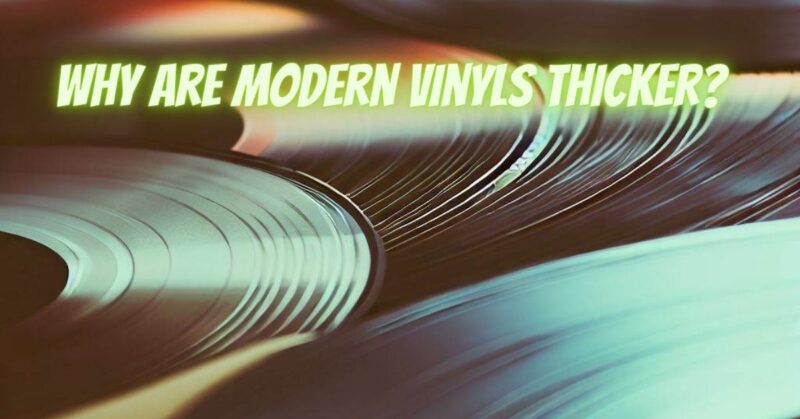Vinyl records, once thought to be a relic of the past, have experienced a remarkable resurgence in recent years. Audiophiles and music enthusiasts alike have rediscovered the warmth and authenticity of vinyl sound, contributing to a thriving market for analog music. One notable trend in the vinyl industry is the increased thickness of modern pressings, prompting enthusiasts to question the reasons behind this shift. In this article, we delve into the factors driving the evolution of vinyl thickness and explore how it impacts the listening experience.
Historical Perspective: To understand the rise in thickness of modern vinyl records, it’s essential to explore the historical context. Traditional vinyl records from the mid-20th century were often pressed at 120 or 140 grams. These thinner records became industry standards, but as technology advanced, production techniques evolved, allowing for thicker vinyl pressings. The shift towards thicker records has become particularly noticeable in the 21st century.
Improved Durability: One primary reason for the adoption of thicker vinyl records is the pursuit of increased durability. Thicker records are inherently more robust, reducing the risk of warping and damage during handling and playback. This durability is especially crucial for audiophiles who value the longevity of their collections and seek to preserve the quality of their vinyl over time.
Enhanced Sound Quality: While the correlation between vinyl thickness and sound quality is not absolute, many enthusiasts argue that thicker records can contribute to a better listening experience. The increased mass of the vinyl allows for deeper grooves, potentially reducing surface noise and enhancing overall audio fidelity. Additionally, thicker records may exhibit better bass response, providing a more immersive and dynamic sound.
Artistic Expression: The resurgence of vinyl has also seen a renewed focus on the artistic aspects of album packaging. Thicker records provide a canvas for elaborate and visually stunning packaging, including intricate gatefolds, inserts, and textured sleeves. This shift reflects a desire to celebrate the tangible and aesthetic qualities of physical music media, offering collectors a multisensory experience that complements the auditory pleasures of vinyl.
Market Demand and Perceived Value: The modern vinyl market is driven not only by audiophiles but also by collectors who appreciate vinyl as a tangible and collectible medium. Thicker records are often associated with higher quality and perceived value, leading many record labels to produce limited-edition releases on thicker vinyl. This strategy caters to a niche market of collectors willing to invest in premium editions for their increased durability and aesthetic appeal.
The evolution of vinyl thickness in modern pressings reflects a nuanced interplay of factors, including durability, sound quality, artistic expression, and market demand. While the correlation between vinyl thickness and audio fidelity may vary, the trend towards thicker records has undoubtedly become a defining characteristic of the contemporary vinyl renaissance. As the vinyl resurgence continues to captivate music enthusiasts, the exploration of innovative pressing techniques and materials will likely shape the future of this enduring medium.


